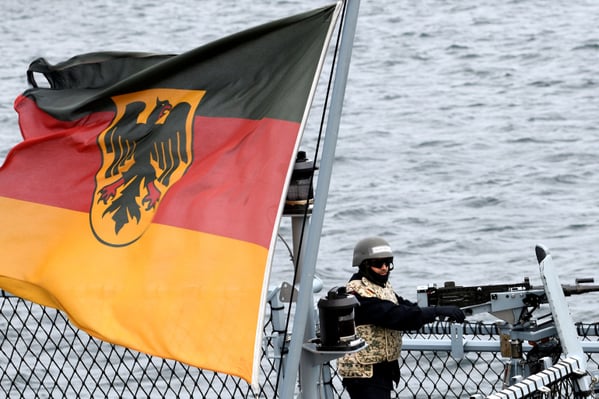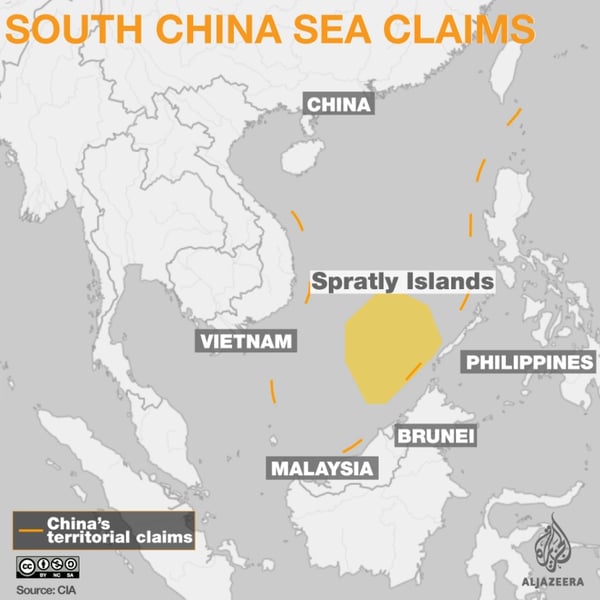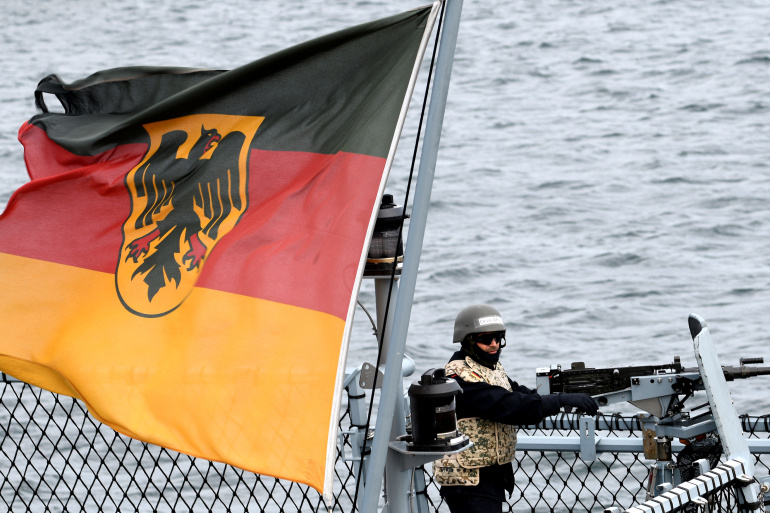US hails plan by NATO ally calling it welcome support for a ‘rules-based international order’ amid tensions in resource-rich waters.

A German frigate will set sail for Asia in August and, on its return journey, become the first German warship to cross the South China Sea since 2002, senior government officials said on Wednesday.
The ship will not pass within what officials called the “12-nautical-mile”, officials in the foreign and defence ministries added, in a reference to contested areas of the sea, which China claims almost in its entirety.
The United Kingdom is also sending its navy to the region, announcing on Saturday that HMS Queen Elizabeth will set sail on its maiden voyage in May this year and is expected to reach eastern Asia by the late northern hemisphere summer.
China has established military outposts on artificial islands across the South China Sea, which is also claimed by Vietnam, Malaysia, Brunei, Taiwan and the Philippines, which took China to the international court over its claims.
In 2016, the Court of Arbitration at The Hague ruled there was no legal basis for China’s claim. China refused to participate in the case and later dismissed the ruling as “null and void”.
The US regularly conducts “freedom of navigation” operations in which their vessels pass close by to some of the islands, asserting freedom of access to international waterways.
Washington accuses Beijing of militarising the South China Sea and trying to intimidate its Asian neighbours.
‘Rules-based international order’
The US welcomed Germany’s decision to deploy its ship to the region.
“The United States has a national interest in the maintenance of peace and stability, respect for international law, lawful unimpeded commerce, and freedom of navigation and other lawful uses of the sea,” a spokeswoman for the US State Department said.
“We welcome Germany’s support for a rules-based international order in the Indo-Pacific. The international community has a vital stake in the preservation of an open maritime order.”

A spokesman for the foreign ministry in China said countries enjoyed freedom of navigation and overflight in the waterway under international law, but added: “They cannot take it as an excuse to undermine the sovereignty and security of littoral countries.”
China itself has also been stepping up its activities in the region.
On Wednesday, the state-owned Global Times newspaper reported that China’s navy conducted conducted a series of “combat-scenario” exercises including amphibious landing in undisclosed waters “away from the mainland.”
In January, Beijing passed a law that for the first time explicitly allowed its coastguard to fire on foreign vessels.
The Coast Guard Law empowers it to “take all necessary measures, including the use of weapons when national sovereignty, sovereign rights, and jurisdiction are being illegally infringed upon by foreign organisations or individuals at sea”.
Amid alarm among the countries surrounding the sea, China said the law was a “normal domestic” measure that was not aimed a particular country.
The formulation of the law, Beijing said, “doesn’t indicate any change of China’s maritime policy”.
China’s coastguard is the most powerful force of its kind in the region and is already active in the vicinity of uninhabited East China Sea islands controlled by Japan but claimed by Beijing, as well as in the South China Sea.
In response, France announced in February that a nuclear-propelled attack submarine and warship patrolled in the South China Sea to underscore freedom of navigation.
Last January, a Canadian warship also sailed near the South China Sea, passing through the Taiwan Strait on its way to join exercises nearby with Australian, Japanese and US navies.
Source: Aljazeera








